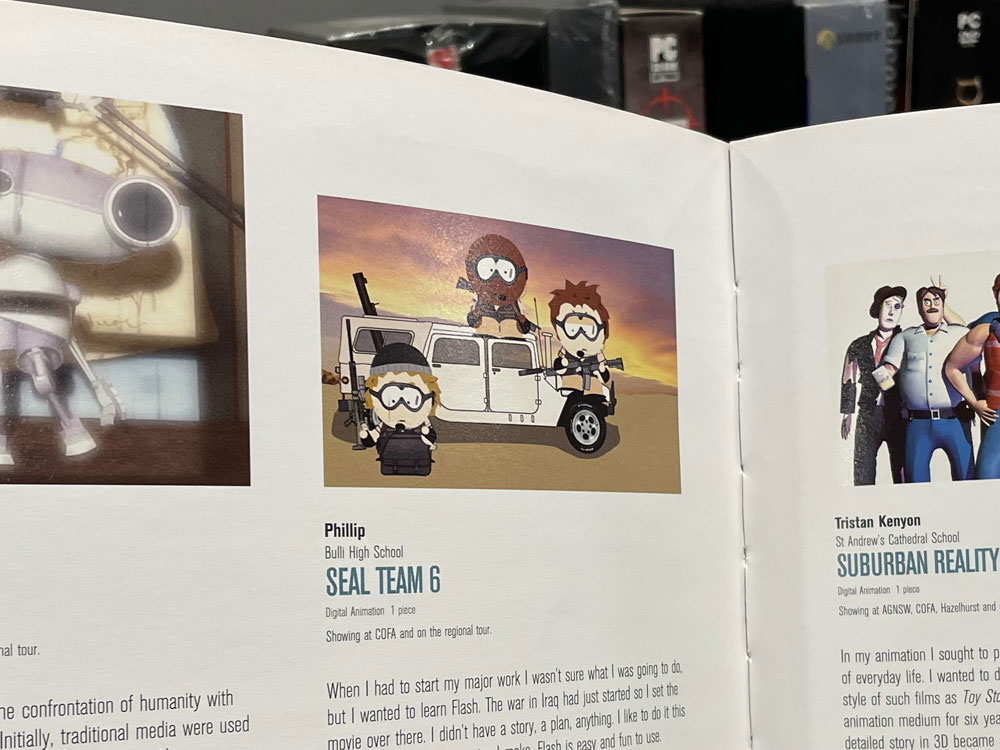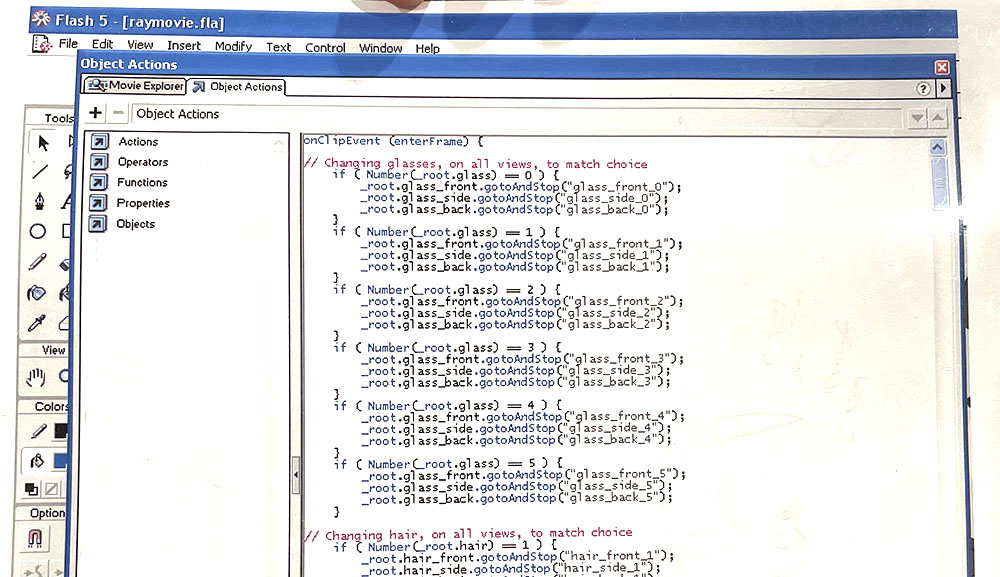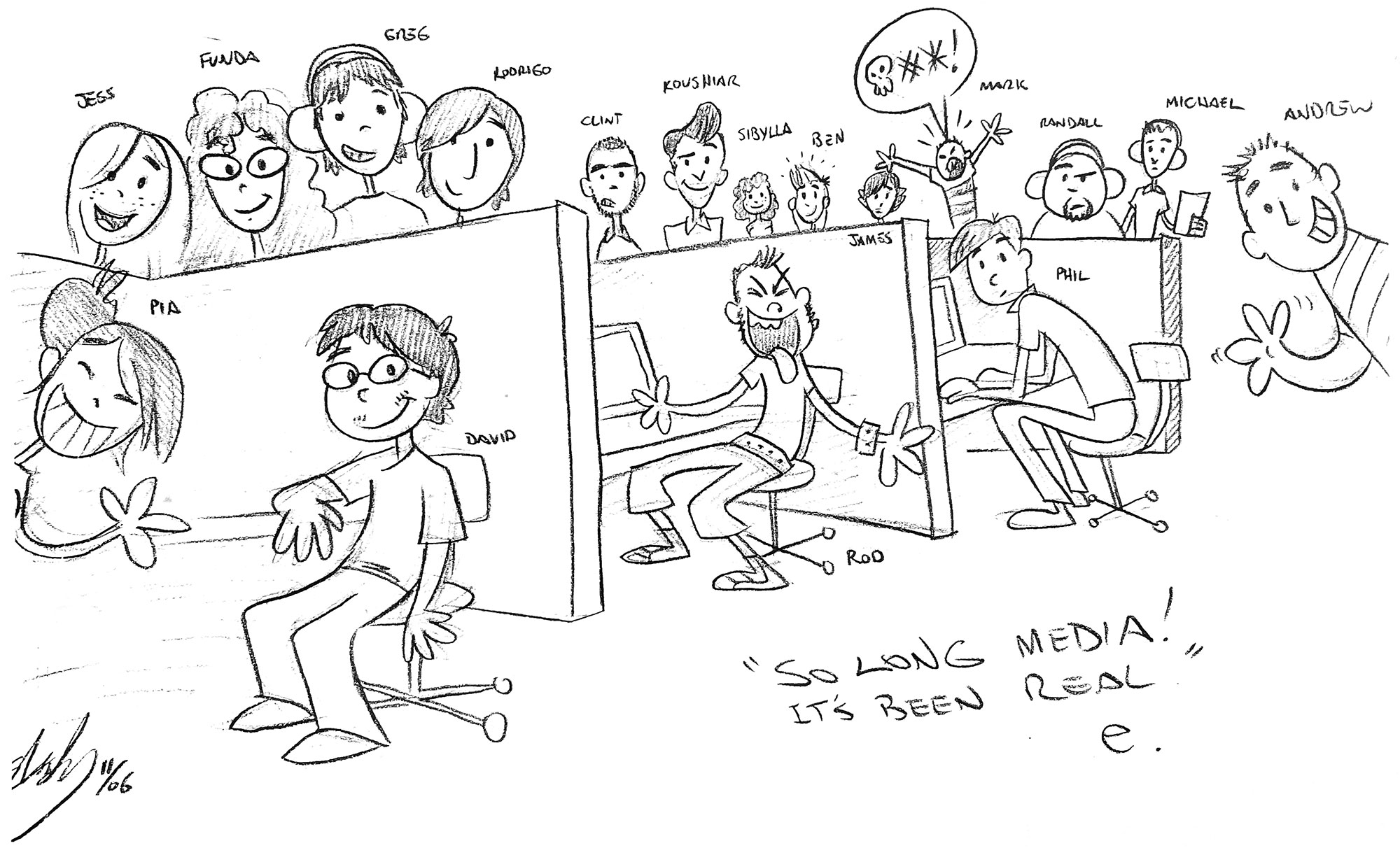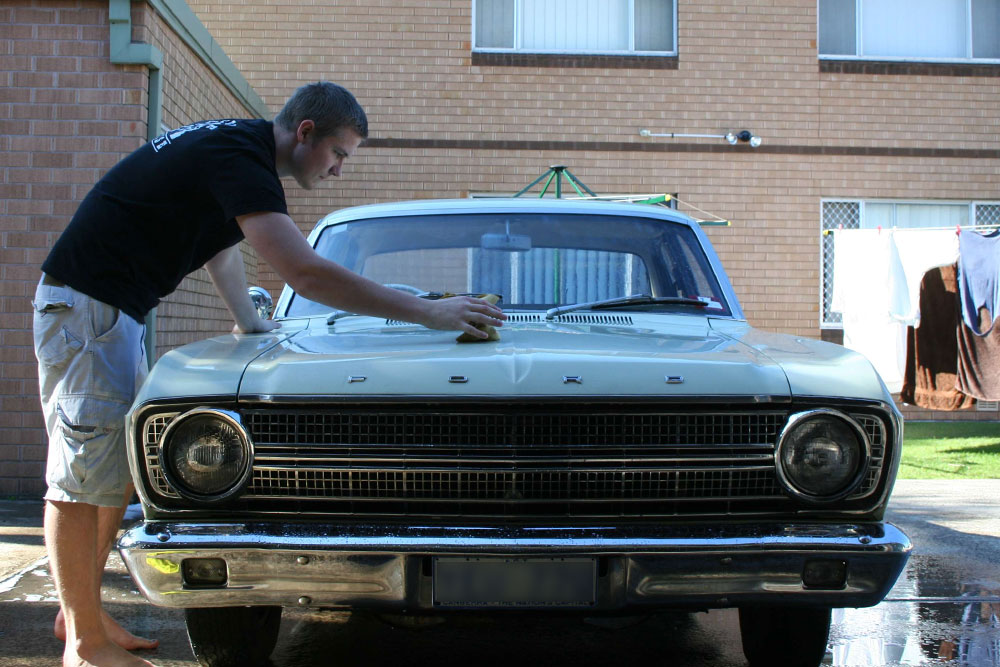
How Repella Fella came to be
To truly understand where my games and inspiration come from, it might be best to start from the beginning.
I didn’t have a great childhood. My parents separated early on and by the time I was 10, my sister and I had been abused in numerous ways. This happened day after day for a number of years. It wasn’t until I returned to live with my mother and brother that I had an idea of what normal was. Even then, I lived in a housing commission home (Australian public housing) and had multiple behavioral issues. I would steal, fight, light fires and generally be a nuisance to everyone. My anxiety prevented me from doing many things over the years, including pursuing a career in animation after leaving school.
If I wasn’t out causing trouble, I’d typically be at home playing SNES on my small black and white TV or sitting on the shared bedroom floor playing with my GI Joes. What I did with those toys is a lot like what I do now with animation – I created stories.

In the fifth grade, I would write similar stories at school. This resulted in the principal calling my mother in for a visit, more than once, and I was no longer able to write what I wanted to. My stories were overly violent and the school considered them to be too disturbing.
At the start of the sixth grade I had a teacher I’ll refer to as ‘Mr H’. At first he was wary of my presence due to the trouble I’d often be in at school, but after a while he became more friendly and took an interest in me. He taught me how to use computers, how to install things, how to fix errors and generally how to stay out of trouble. Midway through the year Mr H had me running around the school making updates to school PCs and configuring software. It kept me out of trouble, for the most part, and my interest in computers only grew.
At home, I had a 286 which was only capable of playing games like Commander Keen, Zeliard and Wolfenstein. I’d often use the paint app in Windows 3.1 to draw Nintendo characters. It couldn’t run the latest and greatest software and games, but I didn’t complain – to me it was the most amazing thing I had ever owned.

In 1999 my father bought me my first proper PC. It was HP branded, it had a Celeron processor, 64MB of RAM and a 4GB HDD. There was no dedicated video card at all, so while games like Half-Life could be played, it was at a low resolution, at a terrible FPS and with the game’s built in software renderer. Months later, when I had saved enough to buy my first video card, I came to the devastating realisation that the AGP GPU I brought home wouldn’t fit my motherboard. It was then that I learned the difference between AGP and PCI slots. My HP computer only contained the latter.
Before too long I started to get into modding games, starting with Half-Life and the initial few betas of Counter-Strike. Soon after I learned to use Photoshop and other image editing software.
In 2003, in my final year of high school, I was asked to create something in art class to be graded at the end of the year. I could draw decently enough, but I had no interest in spending months on a single picture. Not knowing what to do, I resorted to Flash and began to figure out how all of its tools worked.
It wasn’t the first time I had used Flash, I had tried it multiple times over the years, but I could never get past the blank canvas as soon as a new document was created. It was just white and empty. From the white background you had to create everything, using what seemed like very basic tools. It was overwhelming.
I began drawing characters to see what I could come up with. The first thing I ever created was a replica of Claude from GTAIII. The problem from that point was that I couldn’t animate him in a way that looked natural, walking animations were the trickiest. I thought about other characters who could move without necessarily having to walk. The only thing that came to mind was South Park.
Eventually I created what came to be known as ‘SEAL Team 6‘. I didn’t plan anything, I only made what I thought looked ‘cool’ and created a loosely based story around it. I managed to score 100% for the animation and it was showcased in ArtExpress.

Midway through SEAL Team 6, at age 17, I wanted to create a game instead. I asked my teacher if a game could be presented as an artwork, he said no. I was stuck with my original idea. I still wanted to create a game of some kind. What I came up with was a choose your own adventure game that would eventually be known as ‘Ray‘. The name actually comes from my brother, Ray. While I was making SEAL Team 6, he jokingly asked…
Why don’t you have some guy called Ray come busting in and shoot everyone in that room?
…followed by machine gun sounds he made with his mouth. Since I had no other name for the game, that was that.
I wasn’t great at coding, so a choose your own adventure game seemed like something I could manage on my own. All I ever had to do was tally a score and ensure the correct scene played at the press of a button. The scores were mostly meaningless. You’d either choose the more violent and offensive options to get a good outcome while the more conscientious choices would give you something… less flattering.
When the game released I couldn’t quite understand why anyone would give it a positive rating. I thought of it as being very crude and simple. On Newgrounds I saw other artist’s work that I considered to be far more worthy of people’s time. Johnny Rocketfingers, Knox claymations, Salad Fingers and anything by Adam Phillips. Whatever, though. I enjoyed creating games and people enjoyed playing them, so I continued.
The next year, after having finished school and starting work as an apprentice electrician with RailCorp, I spent a lot of my spare time working on Ray Part 2. When I first began, it was more ambitious than the finished product. You could choose which clothes to use, which weapons, you could go to various locations at will and even choose the method of transport – it was very interactive, as was the prototype. I eventually realised it would take years to complete. Earning $250 week in 2004, with food, bills etc to pay, I couldn’t afford to fund a team of any kind. I scrapped most of the interactive elements and made it more streamlined.

This was a pretty dark time for me for multiple reasons, mainly stemming from my childhood. I felt suicidal most days and would often drink more than I should have while taking various drugs. The thought of not waking up the next day didn’t bother me at all. If I didn’t meet my girlfriend (and current wife) in 2004, I don’t think I would be here today. After we met, we spent many nights sitting around as I made the second Ray game on an old laptop.
After Ray Part 2, I wanted to try my hand at something else, but didn’t know where to begin. Making cartoon violence was fun, but it was starting to get old. I was at my sister’s house one weekend when she put on a song and asked me to listen to it. It was about a little girl who lost her father in September 11, talking to him while I’ll stand by you played in the background.
She kept asking me if I thought it was sad. ‘No’, I said, but I was full of shit. Inside, I was shattered. I decided to use that song for a new animation called ‘I miss you daddy‘.
By the time I started on Ray Part 3, I was determined to bring back all of those interactive elements I removed from the second game. All of which would come after a long introductory sequence. The introductory sequence was the only thing I ever released.
From that point on, my life got a lot busier and I was never able to finish the game. I have lost the files now, but there was quite a lot I had created that never saw the light of day. When I created those games, it was always on the fly and without much planning. A lot of things never made sense either, which could mostly be attributed to my lack of knowledge and experience of the world.
When the Ray Part 3 introduction had released, I often saw comments where people were complaining about Japanese voice overs. I had no idea what they were referring to and never bothered to check. Over the years, I came to realise that the voice files I ripped from Counter-Strike Condition Zero were actually of many different languages, not just those that I considered to be close enough to Arabic. I had taken any voice file that sounded foreign and put it in where people would speak a different language. I don’t know what the people in the files were actually saying, and I’m sure it sounds utterly ridiculous to people who do.
For SEAL Team 6 I did a similar thing. The opening music I sourced sounded cool and military-like, and it wasn’t until years later that I realised the music was from the Russian national anthem, which obviously wasn’t quite on theme.
As years went by I created more iterations of ‘Ray’, constantly sending the voice actor, Kenjamin Lafayette, new voice lines to do. After a while I would start emails with ‘It’s that time of the year again…’, signaling that I had another approach I wanted to try. I met Kenjamin through the original Serious Sam voice actor, John Dick, who voiced the ‘Pete’ character in Ray. Kenjamin voices a certain character in Repella Fella too.
In 2005, when I realised working as an electrican wasn’t going to pan out (primarily due to my poor mathematical skills), I began working with my girlfriend’s father who was a grave digger. Or an ‘excavator’ as I would tell people. For nearly two years I helped bury hundreds of people and dozens of farm animals. It was a relatively easy job that paid well and left me with a lot of free time.
By 2006 I didn’t want to do that job anymore. I still recall one service vividly. I was sent to dig a hole by myself for a baby that had died. For obvious reasons, it didn’t take long. I remember how little the coffin was, I even remember the baby’s name, but most of all I remembered how devastated both parents were. The father asked if he could fill in the grave and I handed him the shovel.
Not long afterwards, I applied for a job in the city working on educational cartoons. After a year and a half, the company started to fold and most people were let go. I decided to get out before I was given the boot as well. On one person’s last day, he drew everyone in our department:

In late 2007 I applied for another job slightly (and I mean ever so slightly) closer to home. It was initially to make Flash banner ads (yes, those annoying things), but I moved onto other types of work quite quickly. I learned how to code HTML, CSS, JS as well as how to design websites in Photoshop. Half way through my 10 years at this company, I was able to work from home most days. This helped a lot when I had children and other commitments.
In 2015 I was hired to redesign the Nexusmods website. By mid-2016, after having single-handedly designing and coding the entire frontend of the site, I was exhausted.
I decided to try and steer clear of web development for a while and focus on what I enjoyed doing instead. It didn’t take long to figure out what I wanted to do as my idea process revolved around ideas and locations rarely seen in video games. As I’m an Australian living in Australia, it seemed like a good choice, particularly since most games and movies depict Australia as a barren, dusty wasteland.
Initially I wanted to create the game in Flash, as a sort of farewell to Flash. It was going to be 15 minutes long, have one playable area, and be made with vector graphics that would scale to any resolution.
As I had targeted Flash, I had to ensure that scenes didn’t include very much detail or many moving parts. Flash player is notoriously bad for performance, and scenes would hiccup for no apparent reason. With more detail and moving parts, the worse it got. When the character would walk around the stage it would often stutter. Other times it wouldn’t. I remember how nonsensical it seemed, it did my head in. I turned to others for help.
$2,000 later, I had two developers who tried their best to get it running smoothly, but both eventually gave up, despite how much I offered them. The last developer I hired ensured he could get it running smoothly but basically took the money and left me with an unfinished product.
It was at this time in 2017 that I decided to try creating a prototype myself by using Construct 3. I had some experience as I had created a game for a finance company to be displayed on their Facebook page. This allowed me to cut out Flash altogether and opened up many possibilities. It limited some aspects too. Flash is still great at a lot of things that no program has been able to replicate since, but at the end of the day, Construct was the far better choice.
By 2018 I had only created the first 30 minutes or so of the game. It was at this time that I had been at my company for 10 years, which entitled me to long service leave. I took my leave pay, paid all of my bills for the year in advance, I quit my job and decided to join the NSW Police Force. It was something I had always wanted to do.
I spent 7 months preparing. After a lot of physical training, tests, interviews etc, I found myself at the Goulburn Police Academy. But it wasn’t meant to be. For reasons related to my childhood, I couldn’t do it, and soon afterwards I voluntarily left to return home. Instead of explaining to them why I didn’t want to do it, I simply said that it wasn’t for me. I umm’d and ahh’d for weeks afterwards and even submitted another application. I was accepted into the next class, but I couldn’t do it.

Up until 2018, nobody knew what kind of childhood my sister and I had. We were always afraid of mentioning it to anyone in fear that it would affect career opportunities, relationships, friends and everything else that mattered. Now that my dream job had gone down the toilet and I was freelancing as a web developer, I no longer had to worry about how it would affect future prospects.
My sister and I filed statements against the abuser in 2018. The last report I submitted in relation to the case was 37 pages long. To this day we still see this person in the media as they are tied to a very high profile and ongoing investigation. It’s irritating, especially when you consider the nature of that case, but other than waiting for a desirable outcome, there’s little we can do.
I was 34, exactly double the age of 17. The age I was in High School when I made the first Ray game.
Now at home, without a full time job and no other goal in sight, I decided to turn my hobby into something I could sell. I started hiring professional voice actors, I bought myself a decent microphone and I put far more work into the game than I’d put into anything before.

None of these things came cheap, so I started selling what I could do without. I owned a 1967 Ford Falcon (similar to the one seen at the end of the Ray Part 3 Introduction) that I had kept for roughly 10 years. It was the first thing to go. Closely followed by my motorbike and video game collection. From then on, every couple of months, I had to set time aside to do web design & development work to pay the game’s bills.

I never made any money from the Ray games. Not that I ever set out to do so. I was using a style I hadn’t created after all. I did win a Newgrounds award once, but I never monetised any of the titles in any way. That didn’t stop others, though. Multiple times over the years, I’ve had to make requests for Ray games to be taken down from sites and stores.

I hired my brother in law to perform the Waltzing Matilda theme song with his band as well as the licensing costs to a firm in New York. Without the license, I wouldn’t be able to use the song internationally (there is no copyright in Australia, only overseas).

Multiple pieces of music have been composed for recurring elements in the game. Good sound effects are hard to come by, and the game contains over 2,500 of them. By 2021 I had spent between 20 – 25K without any outside funding.
I never announced this game or requested any help as I felt I had already let people down too many times over the years. I wanted to get to a point where I could say it’s definitely happening, along with something to show for it. The workload was enormous, but I believe I’m at that point now.
When I decided to put a price tag on the game, 2 hours of animation seemed like a good goal to aim for. I had promised a 1 hour long game after Ray Part 3, and I wanted to smash that number. I never timed my scenes or added them up to calculate the length as I went. I stopped making scenes when I felt like I had enough. To my surprise, when I tallied everything up, there was 4.7 hours worth of animation that spanned 548 scenes. Not only that, but some scenes contain scenes within scenes (sometimes over 30), so the true number would be significantly higher.
Based on the prototype I created in 2017, I would estimate that the animation, voices, the painstaking manual lip syncing, sound effects (etc) make up the majority of the total work – which has now been completed. At this point, as I see it, all that’s left is to tie the game together in a cohesive way with good code and an experienced developer.
If the game is successful, and if there’s any interest, I will do a more detailed write up of the development process. I’ve taken hundreds of screenshots and dozens of videos throughout the years.
Until then, I will continue working every day on getting it out the door and into the players hands.